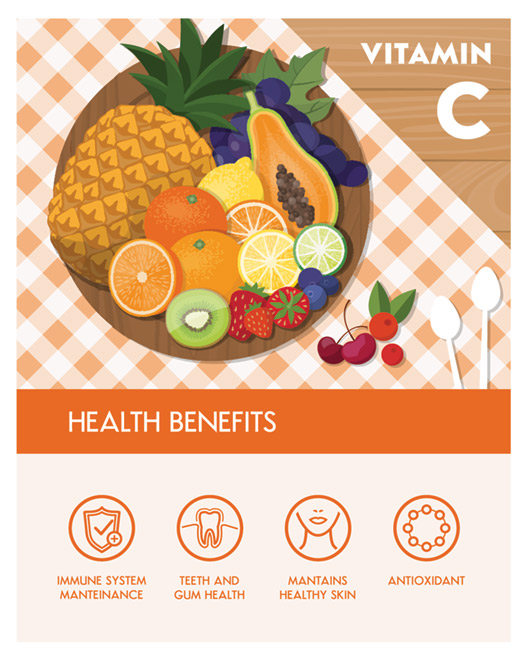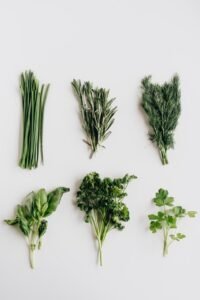| ✨Hey there! This post may contain affiliate links, meaning we earn a commission if you make a purchase through our links, at no cost to you. Please read our disclosures for more info. |
This article is the continuation of Chromatic Diets – Foods with Phytochemicals.
This article contains affiliate links.
Table of Contents
How much Phytochemicals can we get from a Chromatic Diet?
Which foods are the best source of Phytochemicals?
How can Chromatic Diets help prevent Cancer?
How can Chromatic Diets help with Weight Loss?
How can Chromatic Diets help with Type 2 Diabetes?
How can Chromatic Diets help with Healthy Skin?
What are Phytochemicals?
The origin of the word comes from plants (phyto) and compounds that occur naturally in the food substance (chemicals). Phytochemicals are found in plants and have been classified into six major categories by their chemical structures. The six major categories of phytochemicals are carbohydrates, lipids, alkaloids, terpenoids, and phenolics (with other nitrogen-containing compounds).
Phytochemicals are naturally occurring plant chemicals that can’t be created by humans. They are all over the earth and occur in most plants, but some of them can only be found in select groups of fruits or vegetables. These compounds work as antioxidants (fighting free radicals), anti-inflammatory agents (reducing our risk of chronic diseases like heart disease and cancer), or in some cases, provide essential vitamins like vitamin C. Many phytochemicals work together to have a greater impact on our health when taken in its most natural form, from colorful whole food sources.
Phytonutrients are best described as nutrients that protect us from disease, especially diseases related to oxidative damage. They typically have antioxidant properties which helps keep the body healthy. As mentioned above, there are over 4,000 types of phytochemicals that are generally derived from plant foods. Consumption of fruit and high vegetable intake will ensure maximum bioavailability of bioactive phytochemicals.

How much Phytochemicals can we get from a Chromatic Diet?
The amount of phytochemicals that your body is getting depends on how much colorful foods you are eating. It might not be the actual quantity or weight but what is called “biological value”. The biological value of food refers to how much the food can do in terms of nutritional value for you.
When the body takes in Vitamin C from Citrus Fruits such as orange, it may not be as beneficial as getting it from broccoli or strawberries because those two have other phytochemicals that improve absorption and function (bioavailability). Antioxidant activity in the human body will be abundant by incorporating a wide variety of colorful foods.
Which foods are the best source of Phytochemicals?
You can find the best sources of dietary phytochemicals in a variety of foods that include leafy greens, cruciferous veggies, and fruits like berries or citrus. The best source of these bioactive compounds could be a single whole food, like sweet potatoes or from a “chromatic” diet consisting of all different colors of fruits and vegetables.
Avoid processed foods as much as possible for many reasons, but also because they might have artificial sources of vitamins and minerals. Processed foods like fortified breads, pastas, pre-packaged meals, and The best way to prevent cell damage and dna damage is with a balanced diet that consists of several servings of fruit and plant-based foods.
How can Chromatic Diets help prevent Cancer?
Many types of fruits and vegetables contain antioxidant anti-cancer compounds. Beneficial Phytochemicals, are known to lower the risk for cancer because they remove harmful free radicals from the body and generally neutralize them before they can damage healthy cells.
One of these compounds called indole-3-carbinol (I3C), made from the glucosinolate in cruciferous veggies, has shown effectiveness in treating prostate cancer. [1]
Another phytochemical called quercetin, from apples and other fruits and vegetables containing polyphenols, has also shown effectiveness in treating breast and colon cancer. [2]
How can Chromatic Diets help prevent Heart Disease?
Heart disease is the most common type of chronic illness for both men and women. The phytochemical quercetin, from apple skins and other fruits and vegetables containing polyphenol, have shown to improve circulation and reduce inflammation in blood vessels. This can prevent the risk of heart attacks by reducing damage to the blood vessels as well as decreasing cholesterol, triglycerides, and harmful fats.
According to the European Journal of Medicinal Chemistry “Quercetin protects against atherosclerosis, oxidative stress, cardiotoxicity, endothelial cell dysfunction, heart failure etc”. [3]
How can Chromatic Diets help with Weight Loss?
When we choose whole foods like fruits and vegetables instead of processed or refined foods that are high in sugar and fat, the body is able to use more energy in order to metabolize nutrients. The high fiber content of whole foods also helps promote satiety or a feeling of fullness. Fiber can provide substantial weight loss benefits because it keeps you feeling full for longer periods of time.
How can Chromatic Diets help with Type 2 Diabetes?
Type 2 diabetes is a metabolic disorder characterized by high blood sugar and insulin resistance. Chromatic diets with phytochemical components can help the body lower levels of glucose and reduce the risk of development of Type 2 Diabetes. Quercetin Intake has been shown to increase insulin sensitivity and thus lower concentrations of glucose in the blood.

How can Chromatic Diets help with Healthy Skin?
Chromatic diets are full of phytochemicals which promote healthy skin by strengthening its structure, promoting desirable health benefits, fighting acne and aging, and fending off free radicals. Vitamin C from fruits like citrus helps your collagen production which gives you firm, smooth skin.
This blog post is about a diet high in fruits and vegetables, focusing on chromatic diets – or simply put “eating color.” There are many health benefits to eating lots of fruits and vegetables including reduced risk for heart disease, lower cancer risk, improved skin conditions, reduction of inflammation which is the cause of many inflammatory diseases such as arthritis like rheumatoid arthritis and gout. A variety of phytochemicals will promote a high antioxidant compounds environment.



